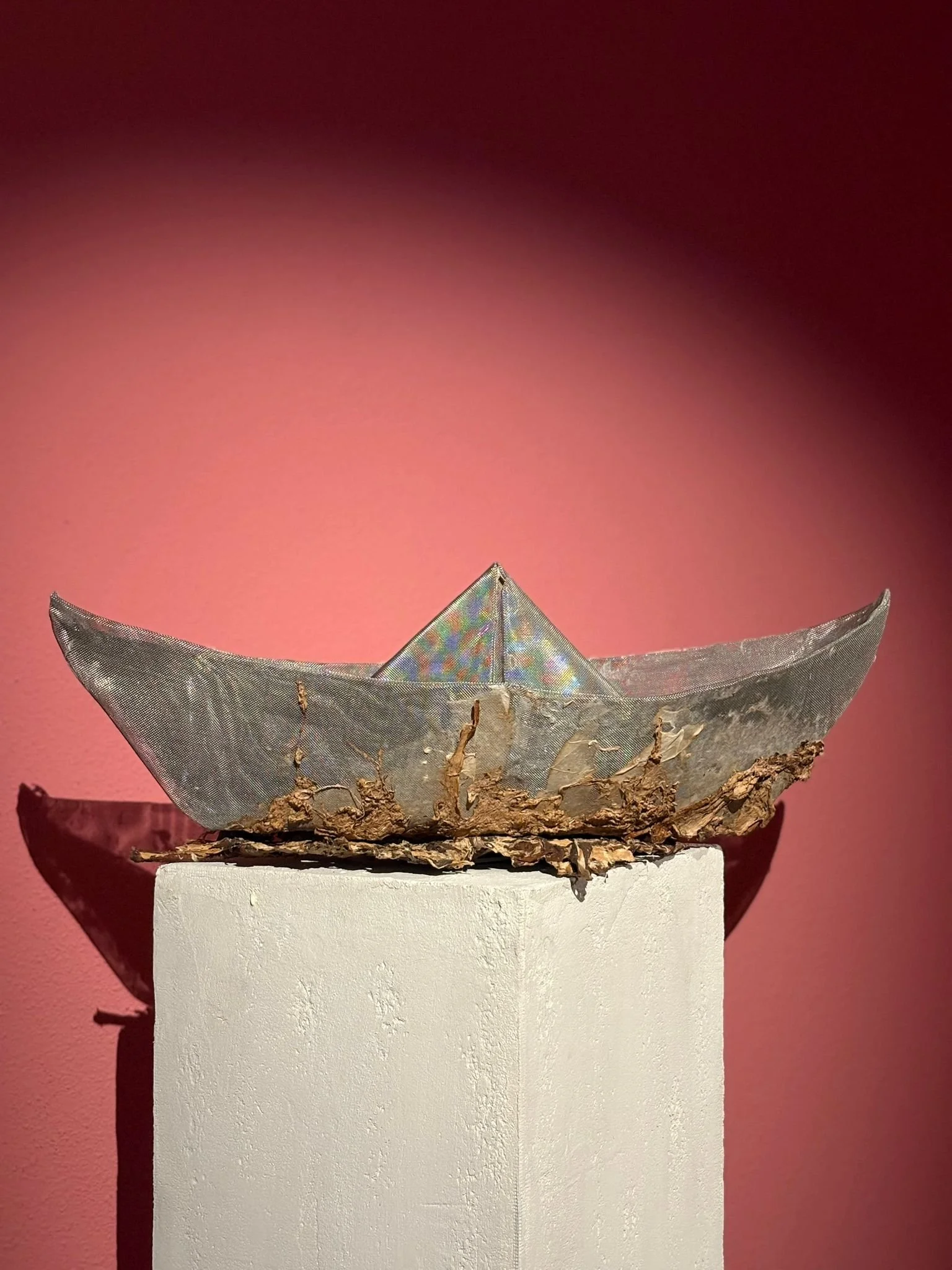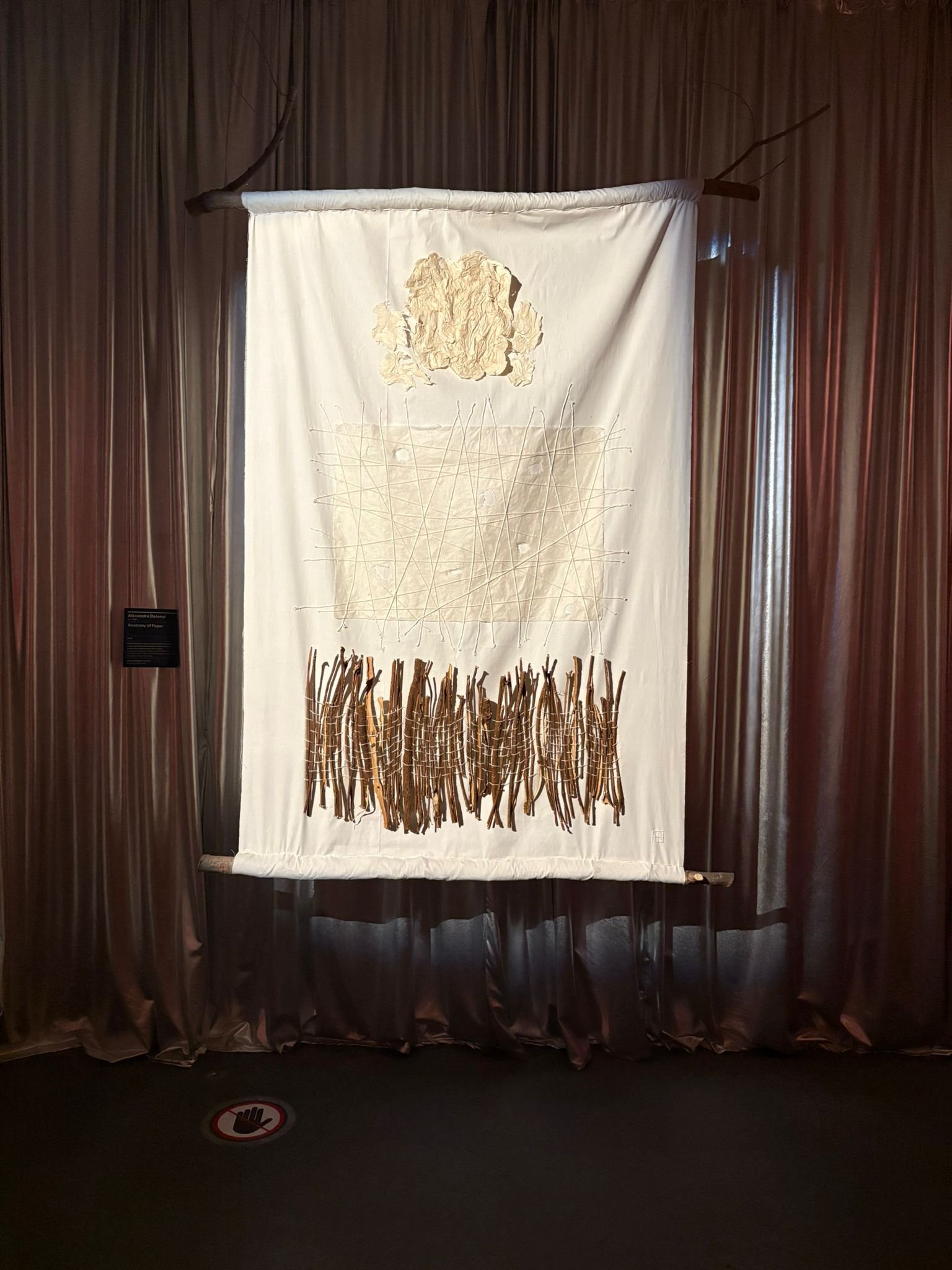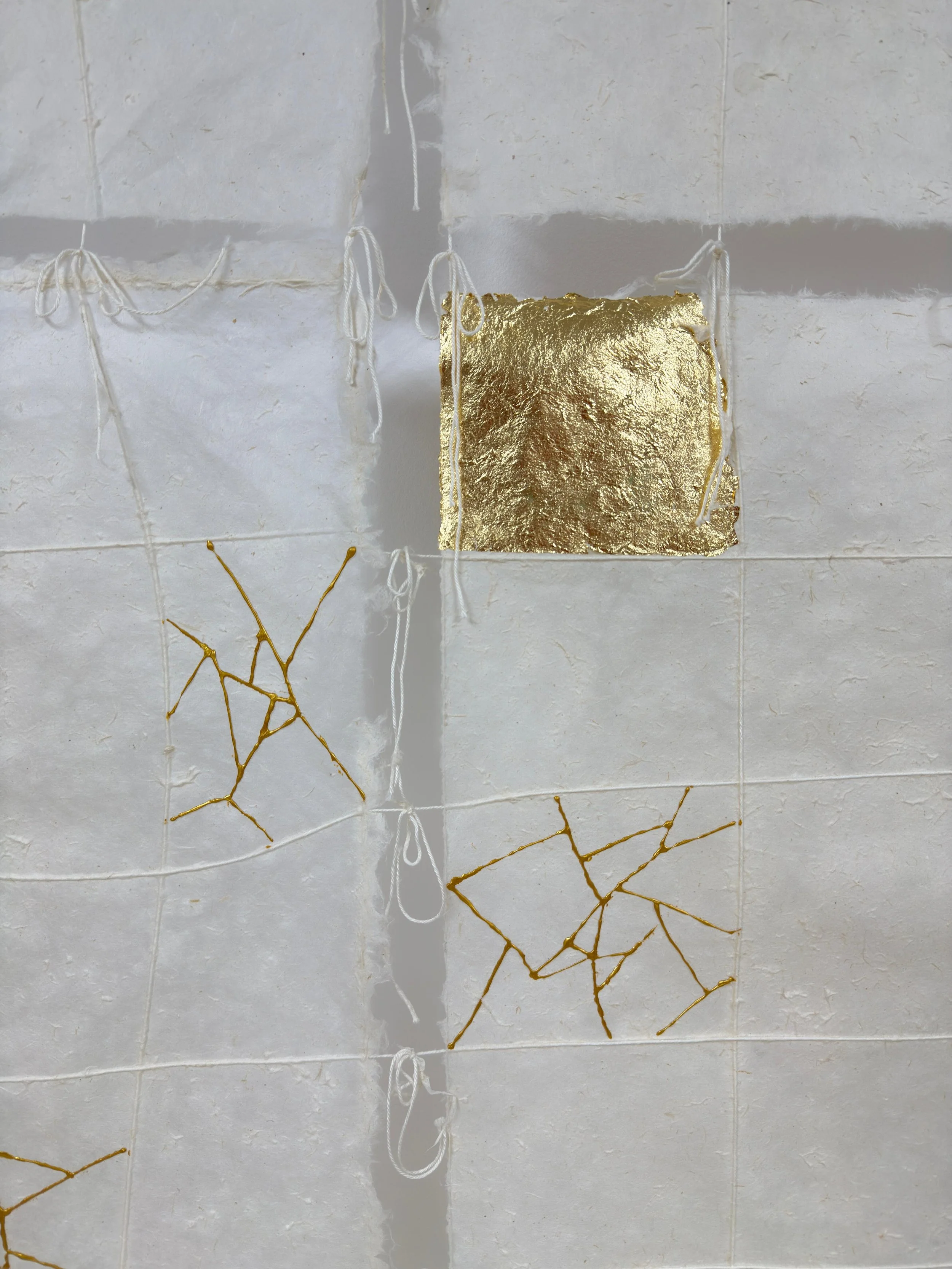Artist Spotlight: Alexandra Baranyi
“People think that paper is used for crafts, but when they come to my studio, they see that it can also make art.”
With a practice rooted in patience and precision, Alexandra Baranyi stands among the most distinctive emerging voices in Romanian contemporary art.
Working primarily with hand-processed paper and mixed media, her works explore the intersection between material fragility and emotional endurance — tracing themes of memory, trauma, the body, and poetic absence.
During The White Night of Galleries 2025 — a nationwide celebration of contemporary art held across Romania — Baranyi’s warm, welcoming, and intricate studio became one of the event’s most visited spaces. Despite the abundant rain, visitors, curators, and collectors filled the serene environment, drawn to its calm energy and the quiet intensity of her work.
Baranyi’s art evokes both introspection and resilience: her surfaces breathe, scar, and heal, revealing a delicate balance between gesture and restraint. Each piece seems to carry its own pulse — fragile, yet enduring.
Installation view of Alexandra Baranyi, Wreckage, mulberry origami, 80 × 30 × 30 cm.
Image Courtesy: Alexandra Baranyi
Virgil Munteanu: Your studio feels calm and luminous — almost meditative. How does this environment influence your work?
Alexandra Baranyi: Paper requires calm, water, and time. I start from the tree, then, of course, the basin, and let it dry naturally. It’s a process that teaches patience. The space reflects that rhythm — silence allows the paper to speak for itself. I need that stillness; it’s part of how the material becomes alive.
VM: You are self-taught, yet your handling of paper feels incredibly refined. What first drew you to this medium?
AB: Paper remembers. It bends, folds, and scars — like the human body. Some people think of it as a craft material, but when they visit my studio, they see it differently. Paper is not passive; it reacts, it resists. When you treat it with respect, it starts to mirror your energy. It becomes a collaborator of sorts.
VM: Many of your works revolve around the body, trauma, and absence. How do these themes emerge in your process?
AB: I rarely begin with a fully formed concept. I start with an idea, a feeling — and then I let the process guide me. The paper breaks or transforms, and I follow that change. It’s similar to how memory works: reshaped every time we revisit it. Trauma, to me, is a form of transformation — it changes texture, just like the paper changes under water or pressure. People do that too, evidently.
Installation view of Anatomy of Paper, mixed media (linen, mulberry bark, mulberry paper, strings, branches), 170 × 130 cm.
Image Courtesy: Alexandra Baranyi
VM: Tell us more about your Trauma series, which you’ve been expanding recently.
AB: It started with small, white works — quiet meditations on healing. Over time, I began introducing warmth and gold, exploring the effects of light upon resilience. The gold doesn’t hide the wound; it dignifies it. The newer pieces are about what remains after the break — how something fragile can become precious through endurance.
VM: Your studio’s participation in this year’s [2025] White Night of Galleries drew a remarkable crowd, even in the rain. What was that experience like?
AB: It was deeply moving. People came in drenched and left quieter, somehow [laughs]. The space became a sort of shelter — not just from the weather, but from noise. We had curators, artists, and members of the Japanese Embassy visiting, and everyone stayed longer than I expected. That evening reminded me that art still has the power to slow people down.
VM:
Your connection to Japan runs deep — you even teach Japanese. How has that culture shaped your artistic sensibility?
AB:
Japan taught me patience and respect for the process. There’s an attentiveness to materials there — to the way they breathe, the way they rest. My works are like rice fields: open, rhythmic, breathing.
I don’t use Japanese concepts like ikigai as direct references, but they define my mindset. I think in that rhythm even when I work here, in Romania.
“I start with an idea, a feeling — and then I let the process guide me. The paper breaks or transforms, and I follow that change. It’s similar to how memory works: reshaped every time we revisit it.”
VM: Beyond the studio, you have a strong entrepreneurial spirit — from jewellery to travel projects. How do these experiences feed into your artistic work?
AB: Travel always changes me. I find inspiration in places where materials and stories feel alive — Japan, Thailand, the Mediterranean. Each journey teaches me a new texture, a new tone. Even when I return home, those experiences remain in the surface of the paper. My entrepreneurial projects keep me grounded, but they also remind me to stay open to movement.
VM:
What are you focusing on next?
AB:
I am really keen on reconnecting with my roots in this country — exploring local pigments, studying the materials and tools used in our traditional crafts, and trying to further uncover the essence of Romanian culture. I am also interested in merging it all with my “Japanese” side, which I admit has had a stronger influence on me in recent years.
That would hopefully uncover new horizons for my practice in general.
I’m also very curious to see what Opera will do in and for the Romanian art space. I believe it’s time for more independent voices and professional networks to appear — platforms that can connect Romanian artists to the wider world.
Delicate yet enduring, Alexandra Baranyi’s practice reflects a profound understanding of material and meaning. Through the quiet resilience of paper, her works transform fragility into permanence — embodying the traces of emotion, process, and time.
For inquiries regarding Alexandra Baranyi’s works or to learn more about her artistic practice, please contact Opera Art Advisory & Collective at info@operaadvisory.com or discover more at operaartadvisory.com




